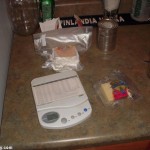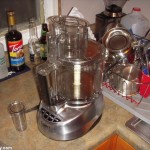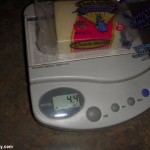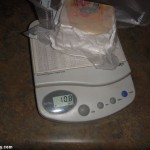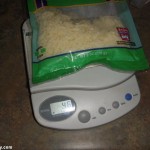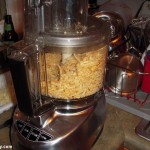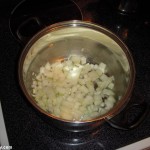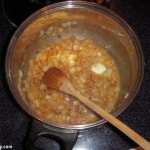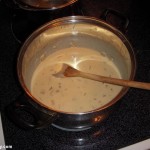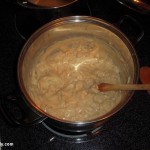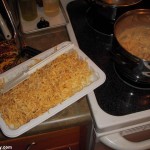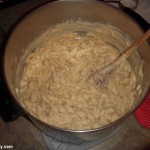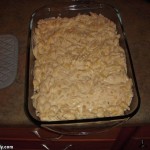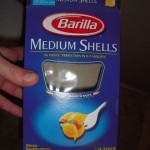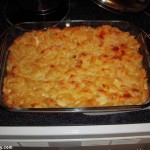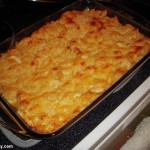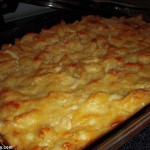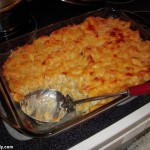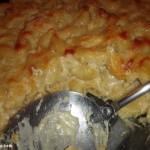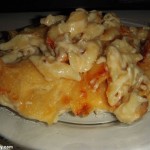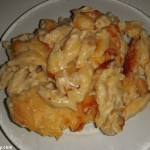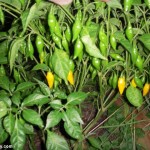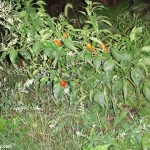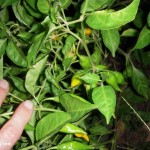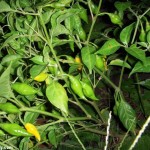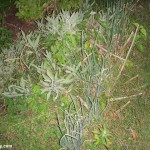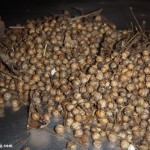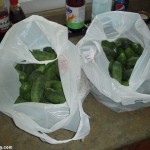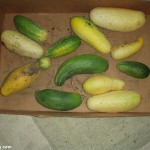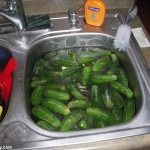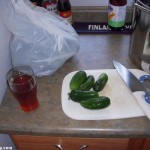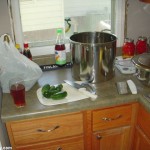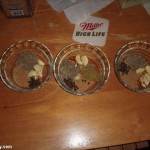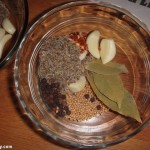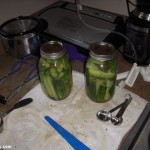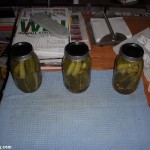This mac & cheese, is really the first time that I’ve made a baked mac & cheese from scratch before. I kind of had a general recipe to go by, but as you’ll see below. I kind of missed a few critical points in winging my recipe. But lets at least knock out a couple of major items in making this mac and cheese on the fly. First and foremost was that it was 9pm on a Sunday when I started to make this recipe, so I really didn’t want to go to the grocery store to get any missing items. This meant that I had to make do with what was already in the house, meaning that I didn’t have, whole milk, eggs, or cheddar cheese. But what I did have on hand was one can of evaporated milk, a bunch of random cheeses, 1/2 gallon of heavy cream, butter, flour, onions, pasta, olive oil and Parmesan cheese. So after a bunch of searching online, I found a mac & cheese recipe that used a roux, so I was off and running. It wasn’t until way, way, later on that I realized that I didn’t fully read the recipe. But that is part of knowing how of cook, and correcting mistakes on the fly, since all I had to do was improvise when it came to the milk/evaporated milk/heavy cream situation below in the side notes.
And with that out of the way, here is the recipe that I ended up creating, based in part on this recipe:
- 1 lb. Medium Shells, cooked and drained
- 1-2 TB Extra Virgin Olive Oil
- 1 large yellow onion, diced
- 4 TB (1/2 stick) unsalted butter
- 3 tablespoons all-purpose flour
- 1 can (12 fl. oz.) NESTLÉ® CARNATION® Evaporated Milk
- 1 cup heavy whipping cream
- ~4 oz Shredded Mozzarella
- ~4 oz Shredded Monterrey Jack
- ~10 oz Shredded Habanero Cheese
- 1/4 cup Parmesan Cheese or breadcrumbs or crackers to top
- Salt & Black Pepper
It’s easier to think of this recipe, in terms of what needs to be done in two separate pots at the same time:
In Pot #1) Fill the pot with water and bring to a boil, then add some kosher salt. Add the pasta and cook until it is al dente. Drain, and then return the pasta to the pot.
And then in Pot #2) Place on the range and heat to medium (#5), add the olive oil and onions. Sweat until the onions are lightly browned. Add the butter and wait until melted, then add the flour and stir to make a roux. After the roux has formed, and starts to turn a light brown color, slowly add in the evaporated milk, stirring the whole time. Then cook the roux until thickened, about 5-10 minutes. Then dump all the roux, all the heavy cream and all the cheese into the pasta in Pot #1. Mix until fully blended. Then dump into a large Pyrex dish, and top with either Parmesan cheese or breadcrumbs and bake for 30 minutes in a pre-heated 400°F oven, until browned and bubbly on top. Allow to cool and set for 5-10 minutes before serving.
Side Notes:
1) As I mentioned above, I really didn’t bother to read the recipe in detail before making the dish. Since if I had read the recipe, I would have realized that I needed three cans of evaporated milk instead of one can. Hence the addition of heavy cream at the very end of the recipe. So next time I make this dish, I’ll have to get a couple of extra cans of evaporated milk, since I really don’t keep any in the house.
2) Also part of not reading the original recipe, was running into the situation of having a thick roux putty, when I started to add the cheese to the roux. I was only able to add about 1/2 of the cheese before I stopped, since something didn’t make sense (not enough evaporated milk in the pot). So I dumped the putty roux into the pasta, along with the other half of the cheese, and stirred until fully blended. But with not enough liquid dairy in the mixture, things where looking a little too thick. So this is when I started to stir in 1/4 cup at a time of heavy whipping cream, until things started to look creamy. Which ended up being after 1 cup of heavy cream was added to the mixture.
3) If you have a Cuisinart, this is the recipe to use it on. Since it would have taken forever to shred all the cheese by hand. Could you do it by hand? Sure. But like all other mis en place, if you can find a faster way to get it done, then go with it. But its tasks like this, or mincing peppers, that sways me in agreeing with Bittman’s argument, on the value of owning a food processor in the kitchen.
Tasting Notes: 10/24/2010 @ 10:26pm
The mac and cheese turned out nice and spicy, with the habanero spice increasing with every bite. But for some reason after baking, the habanero heat is less intense then I was expecting (but still way more hot, then what the majority of people can handle). It was creamy, but it probably could have used just a bit more liquid, since it wasn’t a dripping off your fork kind of creamy. But overall for a first attempt, it came out better then expected.
Tasting Notes: 10/25/2010 @ 1:00pm
Surprisingly this mac and cheese reheats very well in the microwave, with very little separation of the roux. But it seems that the key to reheating in the microwave, is to use 50% power instead of 100% power, since at 50% power it seems to do a better job of evenly heating up the mac and cheese without the dish getting greasy from the butter separating.
Other online versions of mac & cheese recipes from the Carnation website:
Cheesy Macaroni and Cheese
Macaroni Cheese for a Crowd
Traditional Macaroni and Cheese
Top of the Stove Mac n Cheese
